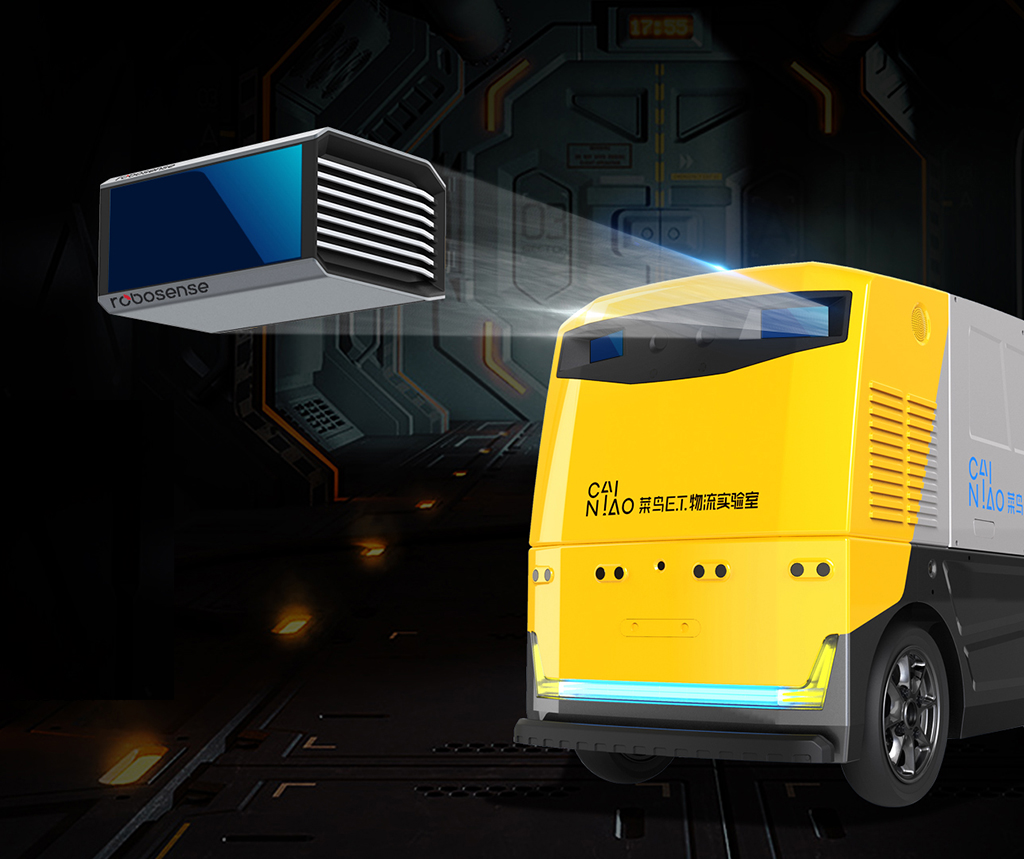
Alibaba unveils unmanned logistics vehicle featuring lidar
Alibaba, the world’s largest e-commerce company, has unveiled a new unmanned logistics vehicle.
The “G Plus” was built in co-operation with Alibaba’s logistics business unit, Cainiao, and RoboSense, a developer of robotic technology.
The G Plus is said to be the world’s first autonomous logistics vehicle to use solid-state light detection and ranging (lidar) technology.
The new vehicle was unveiled at Alibaba’s Cainiao Network 2018 Global Smart Logistics Summit.
The solid-state lidar technology is called RS-LiDAR-M1Pre, and was developed by China’s RoboSense, which says the system is “designed for mass production autonomous vehicles”, which includes regular, road-going cars.
RoboSense and Alibaba say the solid-state lidars for G Plus unmanned logistics cars and trucks will “drastically reduce cost”.
The vehicles can be mass-produced, allowing rapid expansion of unmanned logistics vehicles and streamlining mass market logistics.
Unmanned cars and trucks can be equipped with smart devices, for a courier vehicle, mobile self-pickup station, mobile coffee vending cart, and so on, for new retail scenarios.
Alibaba’s Cainiao G Plus is equipped with three RS-LiDAR-M1Pres, two in front and one in rear, to ensure the most powerful 3D perception for driving.
This allows vehicles to clearly see the direction of travel: shape, distance, azimuth, travel speed, and direction of travel of pedestrians, cars, trucks, and so on, as well as exact areas to drive, ensuring smooth flow of unmanned logistics vehicles in complex road environments.
RoboSense claims RS-LiDAR-M1Pre is the first MEMS solid-state lidar launched by RoboSense. Presented at CES 2018, the core technology of the MEMS LiDAR is disruptive to traditional mechanical multi-beam radars.
RS-LiDAR-M1Pre MEMS micromirror scanning scheme requires only a few laser emitters and receivers to scan the MEMS micro-mirror in both directions because of the swing angle, claims RoboSense.
The company adds that the resolution is a “very fine, high”, and vertical angle resolution of 0.2° throughout angle of view.
For traditional mechanical multi-beam lidar to achieve the same effect, they require more than a hundred laser transmitters and receivers to simultaneously rotate and scan, greatly increasing costs and reducing yield and reliability, making the advantages of MEMS solid-state lidar technology obvious.
While improving the performance of lidar, cost savings is great, and miniaturization greatly improves stability.


